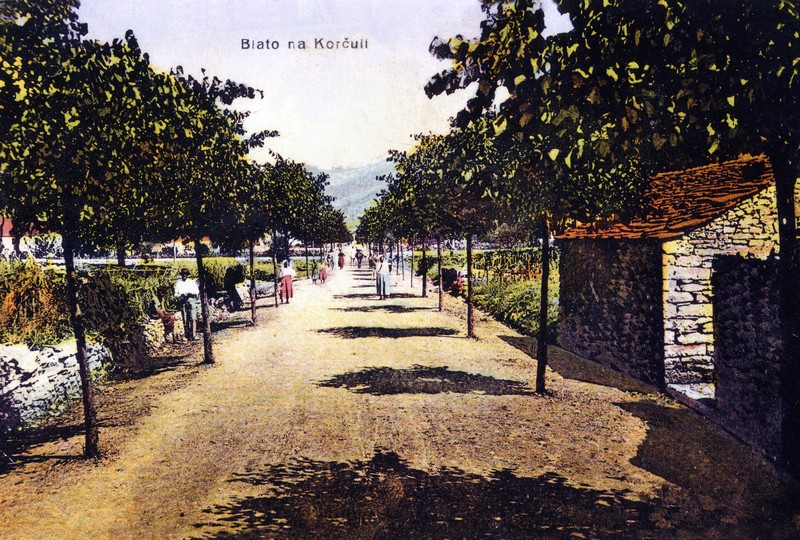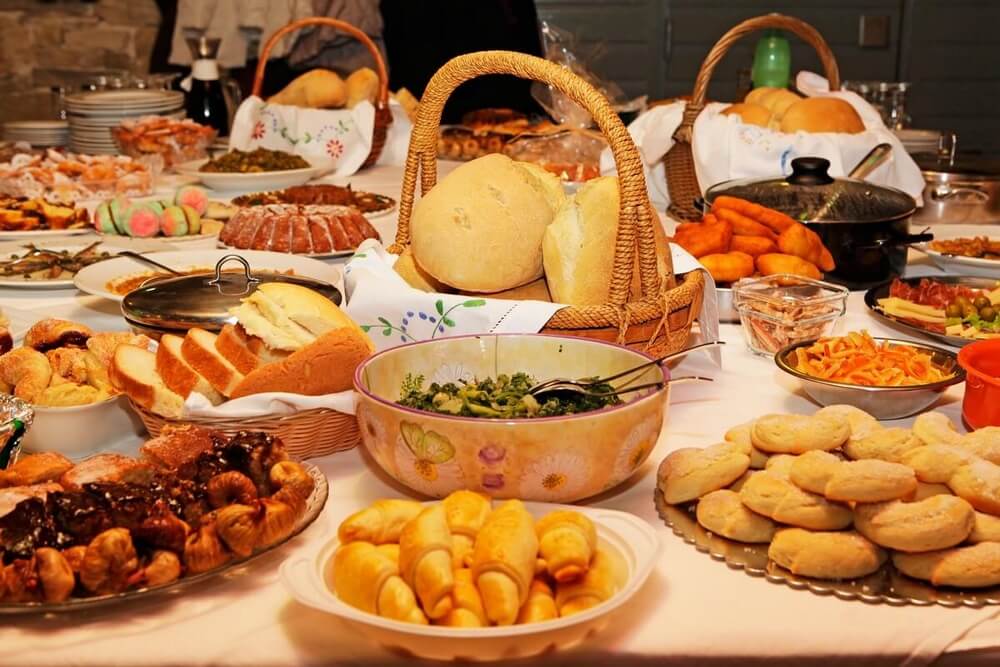
- Tzo Blato
 Blato got its name after the lake that used to be in the valley between Blato and Vela Luka. In the Proto-Slavic “blato“ means any large body of water and it also gave the name to the Hungarian Balaton Lake.
Blato got its name after the lake that used to be in the valley between Blato and Vela Luka. In the Proto-Slavic “blato“ means any large body of water and it also gave the name to the Hungarian Balaton Lake.
Like all the old towns on the island Blato is situated away from the seaside because the sea meant the danger –invaders and pirates always arrived by the sea. On the other hand the town developed by the lake that used to dry out in the summer, and its dry bed would turn into a fertile valley, perfect for wheat.
With those favourable conditions Blato was always a rich and large town for an island. Many noblemen lived there in the tower-houses. Most those houses still stand.
Blato’s nobility and common people gathered in the loggia on the spacious square in front of the parish church. Present loggia was built in 1700, replacing the old one mentioned already in the 15th century. The bell tower in front of the church was built in the 18th century, and the loopholes in its walls tell us it was also used for the defence.
The lake was definitely dried out with the huge melioration system, when the 4 km long tunnel was dug to take the water to the sea. That was at the beginning of the 20th century, during the largest economic growth of Blato. At that time the so called “phylloxera plague”, that arrived from America, destroyed the European vineyards, and Dalmatia was one of the last healthy winegrowing areas. At that time the jetty and the waterfront were built in the nearby Prigradica, the export port for the Blato wine. At that time Blato produced more then 10.000 tons of wine. The stone grape terraces erected on the hills surrounding the town are the witnesses of that era.
In 1911 the linden tree alley Zlinje was planted and it stretches from towns’s side to side. This alley is the second longest linden tree alley in Europe, right after the famous Unter den Linden in Berlin.
After the World War I Blato’s vineyards were also hit by the phylloxera causing the massive emigration from the town that had 8000 inhabitants at the time. In just one day 1200 people from Blato and Vela Luka left to Brazil. People from Blato first emigrated to South America, and later to Australia. For example Sidney, Australia has the three times more people from Blato and their descendants then Blato itself today.
After the World War II began a new cycle of development. The industrial plants are opened and the tourism started to play an important role. The main economic entity today is Radež, a company manufacturing marine equipment, and also many locals rent vacation houses in the nearby coves. Gradually, the deserted vineyards and olive tree plantations are regenerated, and the agriculture becomes again an important section of Blato economy.


























